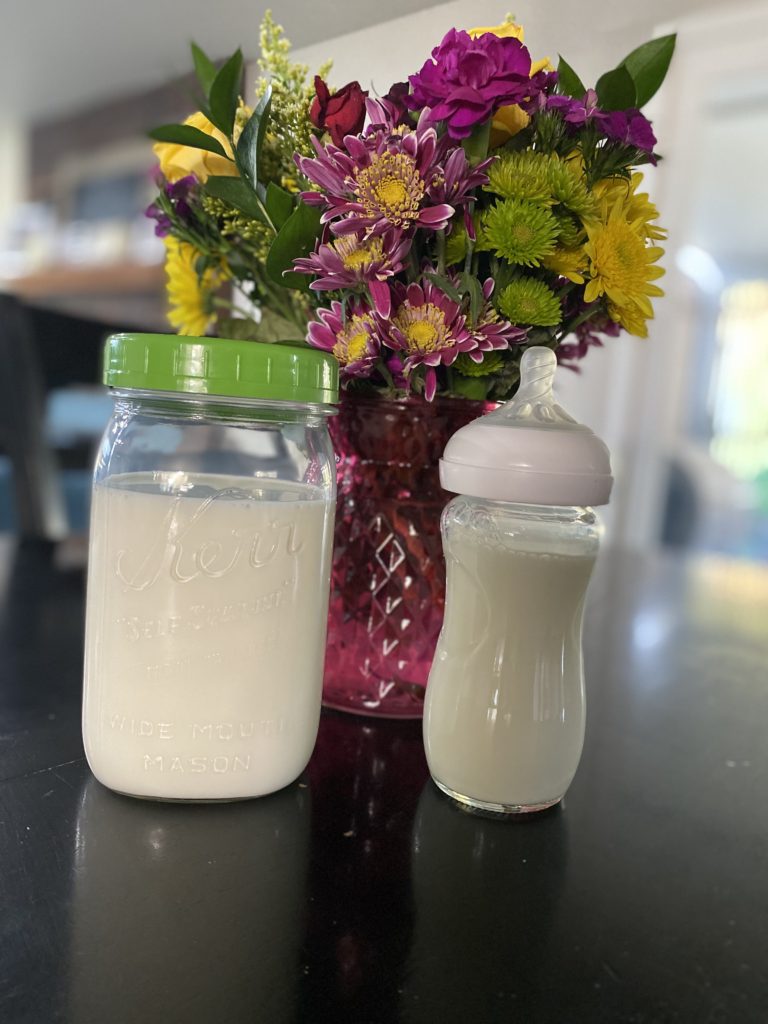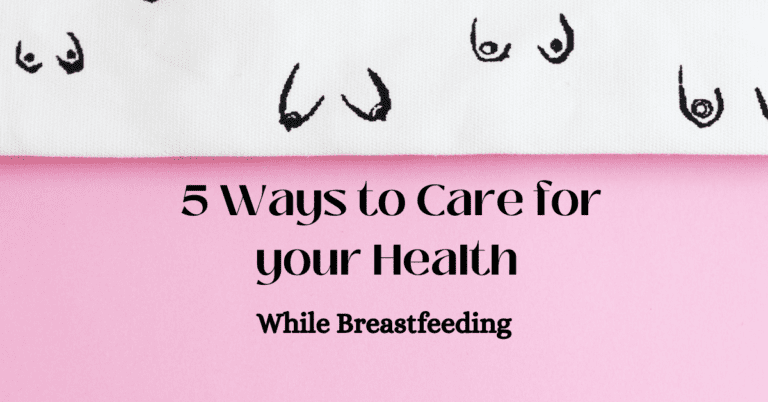
There are so many pros and cons of breastfeeding. Being a new parent can be overwhelming and this is a common decision every mother must make. Let’s analyze the advantages and drawbacks of breastfeeding. This post will offer parents a comprehensive view of making decisions about their and their baby’s well-being.
Breastfeeding has so many advantages for both mother and baby. The benefits include enhanced immunity, improved growth and development, and a reduced risk of certain illnesses. There are many tools mothers can use to make their breastfeeding journey more enjoyable! However, nursing can also present difficulties, such as maintaining milk supply or dealing with postpartum depression.
In this comprehensive guide on the pros and cons of breastfeeding, we will explore various aspects like pumping breast milk for bottle feeding, how long one should ideally nurse their child, tips on weaning while breastfeeding, and comparing it against formula feeding options. By understanding these factors better, you can ensure that your baby receives optimal nutrition during their crucial developmental stages.
This article is for informational purposes only and does not provide medical advice or recommendations. You should always seek the care of a medical professional or qualified healthcare provider for recommendations, questions, diagnosis, and treatment. Never delay seeing your healthcare provider if you have questions or concerns about your health as the material provided on this website is for informational purposes only. This article may contain affiliate links. By clicking a link we may receive a small commission at no cost to you. Please see our privacy policy and Disclosure for more details.
1. Pros of Breastfeeding
A beautiful and rewarding way to feed your baby is by breastfeeding them. It offers numerous advantages for both you and your baby. This makes breastfeeding an ideal choice for many families. Let’s explore the many advantages of breastfeeding for both mother and child.
A. Nutritional Advantages
Breast milk has all the essential nutrients a baby needs. Breast milk includes proteins, fats, vitamins, minerals, and antibodies. These components are crucial in promoting healthy growth and development in infants. Moreover, breast milk is easily digestible by babies compared to formula milk.
B. Health Benefits for Baby
- More robust immune system: Breastfed babies have a stronger immune system due to the presence of antibodies found in breast milk which help protect them from various infections such as ear infections or respiratory illnesses.
- Reduced risk of chronic diseases: Many studies show that breastfeeding effectively reduces the risk of chronic illnesses such as adult obesity and diabetes.
- Cognitive development: Research suggests that breastfed children tend to score higher on cognitive tests than those who were not.
C. Health Benefits for Mother
- Postpartum recovery: Breastfeeding helps in contracting the uterus, reducing postpartum bleeding, and aiding a faster return to pre-pregnancy weight.
- Reduced risk of certain cancers: Mothers who breastfeed have a lower risk of developing breast and ovarian cancer (source).
- Bonding with baby: Close physical contact during breastfeeding can help foster a strong emotional bond between mother and child.
In addition to these health benefits, breastfeeding is an eco-friendly option as it requires no packaging or transportation costs. Furthermore, it’s cost-effective since there are no expenses associated with purchasing formula milk.
Nursing offers a range of advantages, from furnishing vital nourishment to building an intimate relationship between mum and infant. Though the advantages of breastfeeding are numerous, it is also essential to recognize and prepare for any potential difficulties.
Key Takeaway: Nursing provides many advantages for both mom and baby, including nutritionally advantageous elements such as easy-to-digest nutrients, increased immune systems in infants, lowered risk of long-term illnesses and enhanced intellectual growth. Breastfeeding also aids postpartum recovery for mothers by contracting the uterus and reducing bleeding while fostering a strong emotional bond between mother and child.
2. Challenges of Breastfeeding
Now that we’ve gone over the pros of breastfeeding, lets dig into the cons. Breastfeeding, although instinctive and advantageous for both mother and child, can be challenging. It’s essential to be aware of these potential difficulties to prepare yourself better and seek help when needed. Although it seems like breastfeeding is “easy,” I will be the first to say it can be challenging. You aren’t alone if it is, and of course, you are not a failure if breastfeeding doesn’t work for you and your family.
Painful Nipples and Engorgement
When starting your breastfeeding journey, it’s common for mothers to experience sore nipples or engorgement. Sore nipples and discomfort can be caused by an improper latch or positioning during the feeding sessions. To ease soreness, ensure your baby has a secure hold and experiment with different nursing postures until you find one that works for both of you.
This discomfort usually subsides as your body adjusts to breastfeeding, but in some cases may require medical attention or a visit with a lactation consultant if not improving.
Latching Difficulties
Some babies have difficulty latching onto the breast correctly, which can lead to frustration for both mom and baby. Consulting a lactation consultant or attending a local La Leche League meeting can provide valuable guidance on proper latching techniques.
Many babies who have latching difficulties have lip and tongue ties that prevent them from latching correctly. If you have concerns about your baby’s ability to latch, a pediatric dentist can be very helpful! They can identify lip and tongue ties and surgically alter them so that baby can nurse effectively.
Milk Supply Issues
Some mothers struggle with producing enough milk or maintaining their supply throughout their breastfeeding journey. Stress, diet changes, illness, dehydration, medications, or returning to work might affect milk production. If you’re concerned about your milk supply, managing stress and finding a lactation consultation who can help can be your saving grace!
Mastitis
Mastitis is an infection caused by blocked milk ducts resulting in inflammation within the breast tissue – this condition requires immediate medical treatment. Common symptoms of mastitis include redness, swelling/pain around the affected area, fever, chills, body aches & flu-like symptoms. If you suspect mastitis, consult your healthcare provider promptly.
Engorgement & Blocked Ducts
Engorgement and blocked ducts are painful conditions caused by an accumulation of breast milk in the breast tissue. These issues often arise from irregular feedings or tight-fitting clothing like ill-fitting nursing bras. To prevent and treat engorgement or blocked ducts, ensure you’re breastfeeding regularly and invest in comfortable, supportive nursing wear.
Thrush
Thrush is a yeast infection that can affect both mother and baby during breastfeeding. Symptoms in the mother include nipple pain or itching, while the baby may have white patches inside their mouth. Treatment usually involves antifungal medication for both mom and baby.
Social Stigma and Lack of Support
Breastfeeding mothers may face societal pressure to bottle-feed or cover up when nursing in public places. This stigma can make breastfeeding or nursing difficult and be a cause of anxiety in motherhood.
Additionally, some workplaces do not provide adequate accommodations for pumping breastmilk during work hours. It’s important to know your rights as a breastfeeding mother.
Unfortunately, because of human nature, you will likely receive judgment from the people around you. Remember, you can decide what works best for your family regardless of what others think.
Finding Balance with Other Responsibilities
Juggling breastfeeding with other responsibilities such as caring for older children, household chores, work commitments, or self-care can sometimes be challenging. Prioritizing tasks and seeking help from friends/family members/partners might ease this burden somewhat – remember, it takes a village.

Returning to work after giving birth can pose challenges when maintaining an exclusive breastfeeding routine. Consider discussing flexible scheduling options with your employer and researching local laws about workplace accommodations for pumping sessions during work hours.
While these challenges may seem daunting initially, many mothers find that overcoming them leads to an even stronger bond between themselves & their babies throughout the breastfeeding journey.
Postpartum Depression
postpartum depression can impact your ability to breastfeed your baby successfully. If postpartum depression is suspected, seek help promptly to ensure proper support for mental health and successful breastfeeding.
Moms and dads may confront numerous difficulties with breastfeeding, yet, with the proper support, these issues can be conquered. Pumping and bottle feeding with breastmilk is a great option to consider if you are unable to nurse your baby directly.
Key Takeaway: Breastfeeding has challenges, such as painful nipples, latching difficulties, milk supply issues, mastitis, and thrush. Breastfeeding mothers may also face social stigma and lack of support, while balancing other responsibilities can be challenging. However, overcoming these challenges leads to a stronger bond between mother and baby throughout the breastfeeding journey.
3. Pumping and Bottle Feeding with Breastmilk
If you’re a mom unable to nurse directly or decide to return to work, pumping and bottle-feeding breastmilk can be an excellent way to continue providing your baby with the benefits of breastfeeding while maintaining flexibility in your schedule.
In this section, we’ll discuss how to pump safely and store breastmilk, as well as tips for successful bottle feeding.
A. Choosing the Right Breast Pump
There are various types of breast pumps available. They range from manual pumps to electric ones. When selecting a pump, consider portability, efficiency, ease of use, and noise level. Once you have determined the type of pump that best suits your needs and preferences, establishing a pumping routine is essential.
B. Establishing a Pumping Routine
To maintain milk supply when pumping exclusively or supplementally alongside nursing sessions at home:
- Pump regularly (every 2-4 hours) during daytime hours.
- Maintain consistent timing between pumping sessions.
- Try double-pumping (simultaneously expressing milk from both breasts) if possible – it saves time and may increase overall milk production.
- Pump for shorter durations but more frequently, especially in the early weeks after giving birth when establishing milk supply is crucial.
C. Storing Expressed Milk Safely
The proper storage of expressed breastmilk is vital for preserving its nutritional value:
- Use clean, airtight containers or breastmilk storage bags.
- Label each container with the date and time of expression.
- Store milk for short-term use at room temp (up to 4 hrs), refrigerate (4 days max.), or freeze (6 months).
This is just the basics of storing breastmilk. For further instruction on how to store breastmilk the CDC has a lot of helpful information.
D. Bottle Feeding Tips
Bottle feeding your baby with expressed breastmilk requires some adjustments:
- Introduce bottle-feeding gradually by offering one bottle per day initially, then increasing as needed.
- Select a slow-flow nipple that mimics breastfeeding – this helps prevent overeating and eases the transition between nursing sessions and bottles. Baby’s who were essentially nursed may struggle with bottles. It may take some time to find the right bottle for baby.
- Practice paced bottle feeding, which involves holding your baby upright, allowing them to control their intake, taking breaks during feeds, and switching sides halfway through.
Pumping and bottle feeding with breastmilk may require extra effort but can provide you with flexibility while ensuring your baby receives all the health benefits of consuming breast milk. It’s essential to stay patient as both you and your baby adjust to this new routine. Breast milk has so many benefits. It has been shown to lower the risk of childhood obesity, boost the baby’s immune system, and reduce the risk of breast cancer in mothers.
Pumping and bottle-feeding with breastmilk can be a great choice to ensure your infant receives optimal nourishment while allowing you more freedom in your daily routine.
Key Takeaway: Breastfeeding moms can maintain flexibility by pumping and bottle feeding breastmilk. Choose the right pump, establish a routine, store milk safely, and use slow-flow nipples for paced feeding to ensure your baby receives all the health benefits of breastfeeding while allowing you to balance work or other commitments.
4. How Long Should You Breastfeed?
New parents often wonder about the optimal duration of breastfeeding for their baby. The length of time one should breastfeed can differ depending on various elements, such as individual inclinations, the infant’s requirements, and any medical worries that may be present.
Recommended Duration for Breastfeeding
The World Health Organization (WHO) recommends exclusive breastfeeding for the first six months of your little one’s life. This means providing only breast milk without any additional food or drink, including water. After six months, complementary foods can be introduced while continuing to breastfeed until at least two years old or beyond.
In addition to WHO guidelines, the American Academy of Pediatrics (AAP) also supports exclusive breastfeeding for about six months, followed by continued breastfeeding and appropriate complementary foods for up to one year or longer as mutually desired by mother and infant.
Finding What Works Best For You And Your Baby
Breastfeeding duration ultimately depends on what works best for you and your baby. Some mothers choose to nurse well into toddlerhood, while others decide that weaning earlier is more suitable for their family situation or lifestyle.
- Weaning Age: Weaning age varies greatly among babies; some are ready around nine months old, while others continue nursing past two years.
- Mother’s Comfort Level: Your comfort level determines how long you breastfeed. If you feel ready to stop, then totally do it! If you have questions about weaning visiting with a lactation consultant can be helpful.
- Baby’s Health: In some cases, health concerns may require a mother to discontinue breastfeeding earlier.
In conclusion, every mother should decide what is best for her and her family. The decision to nurse and when to stop nursing depends on many factors!
Breastfeeding is a choice that should be based on the particular needs of mom and infant, but it’s significant to bear in mind that sustained nursing can offer numerous health advantages. With proper guidance and support, weaning while breastfeeding can help ensure a smooth transition from breast milk to other sources of nutrition.
Key Takeaway: There isn’t a preferred duration of breastfeeding as it is dependent on you and your family’s needs. Although the CDC and AAP recommend exclusively nursing your infant for there first 6 months of life, don’t feel guilty if formula feeding is best for you and your baby.
Breastfeeding vs. Formula Feeding
Sometimes you may not know if breastfeeding or formula feeding is best for you and your baby. Both methods have advantages and disadvantages. Breastfeeding also has its pros and cons. It’s essential to consider what works best for you and your baby. There are always advantages and disadvantages to every decision we make. That being said, there are similarities and differences between breastfeeding and formula feeding.
The Differences Between Breastfeeding and Formula Feeding
- Nutrition: One of the most significant differences is that breast milk contains a unique combination of nutrients tailored to your baby’s needs. Breast milk is considered the best way of feeding your infant. This is because it contains all the necessary nutrients in appropriate amounts for a growing baby. It also has antibodies that help boost your baby’s immune system, reducing its risk of infections and allergies. On the other hand, Baby formula, although designed to mimic breast milk composition as closely as possible, lacks some vital components like antibodies.
- Cost: Breastfeeding can be more cost-effective than formula feeding since no expenses are associated with purchasing bottles, nipples, or sterilizing equipment. However, if a mother chooses to pump her breast milk instead of directly nursing her child, she may need additional supplies like a pump or storage bags which could increase costs.
- Convenience: For many mothers, breastfeeding offers convenience because they don’t need to prepare bottles before feedings. However, others might find bottle-feeding easier due to its flexibility, allowing anyone (including fathers) to participate in feedings without needing mom present. Breastmilk may also be more convenient if baby formula isn’t available due to supply chain issues.
The Similarities Between Breastfeeding and Formula Feeding
In addition to their differences, there are also several similarities between breastfeeding and formula feeding:
- Bonding time: No matter how you feed your baby, both methods allow you to bond with your little one. Cuddling and making eye contact during feedings can help strengthen the emotional connection between parent and child. Many mothers do feel that breastfeeding helps them bond with their babies due to skin-to-skin contact during nursing sessions. While bottle-feeding parents can still experience bonding through cuddling while giving a bottle, some argue there’s something unique about the connection formed during breastfeeding.
- Feeding schedule: Whether breastfeeding or using formula, both require regular feedings throughout the day (and night). Breastfeeding and formula feeding require a consistent feeding schedule, especially in the early months of life. This ensures that your baby receives adequate nutrition for growth and development.
- Growth monitoring: Regardless of whether you breastfeed or formula feed, it’s essential to monitor your baby’s growth through regular check-ups with their pediatrician. Both breastfeeding and formula feeding can come with their challenges, such as latching difficulties or finding the right formula for your baby’s needsThis will ensure they receive proper nutrition from either breast milk or formula.
Making the Decision: Breastfeeding or Formula Feeding
The final call on whether to breastfeed or formula feed is up to each family, depending on their preferences, lifestyle factors, medical matters, and other unique conditions. There are pros and cons to breastfeeding. It’s important to remember that there is no “right” choice when choosing how best to nourish our babies – what matters most is providing love and support along the journey of parenthood.

If you’re still unsure whether to breastfeed or formula feed, consider speaking with a healthcare professional. Lactation consultants and pediatricians can offer guidance on infant nutrition and parenting styles. This will help you make informed and confident decisions regarding the care and well-being of your precious new addition to the family unit, so you can all be together happily and healthily ever after.
C. Choosing One Method Over the Other
Ultimately, deciding between breastfeeding and formula feeding is a personal choice that depends on various factors like lifestyle, medical conditions, and personal preferences. There are various pros and cons to breastfeeding. Some reasons why parents might choose one method over the other include:
- Breastfeeding:
- Health benefits for both mother and baby (e.g., lower risk of breast cancer in mothers)
- Economical – no need to purchase expensive formulas
- Convenience – always available at the right temperature
- Formula Feeding:
- Mother’s inability to produce enough breast milk
- Medical conditions preventing breastfeeding (e.g., certain medications)
- Work or lifestyle constraints make it difficult to maintain exclusive breastfeeding
Know that the most important thing is a happy, healthy, and well-nourished baby. It doesn’t matter how they get that nourishment as long as they do! Talking with your pediatrician about any concerns regarding infant nutrition can help guide you on your decision. Again, there are pros and cons of breastfeeding and the choice to breastfeed depends on multiple factors.
Key Takeaway: Breastfeeding and formula feeding each offer advantages and disadvantages, requiring families to evaluate their needs when deciding which option is best for them. Breast milk contains a unique combination of nutrients tailored to the baby’s needs. At the same time, formula lacks some beneficial components found in breast milk but offers flexibility to anyone else to participate in feedings without needing mom present. The ultimate choice of breastfeeding or formula-feeding lies in the hands of each family, depending on their individual preferences, lifestyle factors, medical conditions, and other specific circumstances.
Conclusion
Overall, suckling offers a plethora of advantages for both mama and baby, including enhanced immune system operation, a heightened connection between parent and infant, as well as financial savings. However, there are also challenges to consider, such as discomfort or difficulty with latching. Pumping and bottle feeding can provide a solution to some of these issues. The pros and cons of breastfeeding are endless.
Although the AAP and CDC recommend that your child gets breastmilk for their first 6 months of life, that doesn’t mean you are a bad mom if you decide to formula feed.
There are pros and cons to breastfeeding. If you are still deciding whether or not to breastfeed your child, that is okay! Take one day at a time, and you will naturally do what is best for you and your little one.






One Comment
Comments are closed.